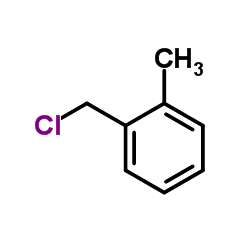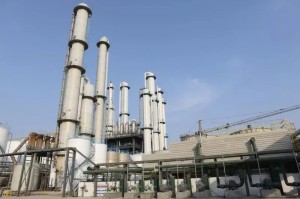-

N,N-Dimethylaniline CAS: 121-69-7 PURITY:>99% Dye intermediates
N,N-Dimethylaniline
CAS: 121-69-7
PURITY ≥99%
Molecular formulaC8H11N
NO 121.18
EINECS number 204-493-5
Port: any port in china
Packing:according to the clients requirement
Storage: Store in dry, dark and ventilated place.
Transportation: by sea or by air
payment methods: L/C, T/T, D/A, D/P, O/A, paypal, western union etc.accept all payment. -

tert-Butyl methyl ether CAS: 1634-04-4 High Purity 99% /sample is free/DA 90 days-
Product Name:tert-Butyl methyl ether
CAS: 1634-04-4
Molecular formula: C5H12O
Molecular weight 88.15
EINECS No.216-653-1
Purity:≥99%
Brand:MIT -IVY INDUSTRY CO.,LTD
Other names:Methyltert-butylether,forresidueanalysis;Methyl-tert-bu;tert-ButylmethyletherforHPLC,>=99.8%;tert-ButylmethyletherHPLCPlus,forHPLC,GC,andresidueanalysis,99.9%;tert-ButylmetChemicalbookhyletherpuriss.p.a.,>=99.5%(GC);tert-Butylmethyletherreagentgrade,>=98%;tert-ButylMethyletherACSreagent,>=99.0%;tert-ButylMethylether,99%,SpcDry,Water≤50ppM(byK.F.),SpcSeal
Application:As a gasoline additive; cracked into high-purity isobutylene for the production of MMA and butyl rubber; medicinal purposes. More than 90% of them are used for gasoline additives, and blending gasoline use is still the leading direction of the development of the MTBE industry.
Port: any port in china
Packing: 200kg/drum OR according to the clients requirement
Storage: Store in dry, dark and ventilated place.
Transportation: by sea or by air
payment methods: L/C, T/T, D/A, D/P, O/A, paypal, western union etc.accept all payment. -

CAS NO.552-45-4 High quality O-Methyl Benzyl Chloride / 2-Methyl Benzyl Chloride supplier in China /DA 90 DAYS/In stock
Product name: 2-methylbenzyl chloride
CAS:552-45-4
Molecular formula:C8H9Cl
Molecular weight:140.61
EINECS No.:209-013-8
Appearance: Clear colorless to light yellow Liquid
Purity:≥99%
Brand:MIT -IVY INDUSTRY CO.,LTD
Port: any port in china
Packing:according to the clients requirement
Storage: Store in dry, dark and ventilated place.
Transportation: by sea or by air
payment methods: L/C, T/T, D/A, D/P, O/A, paypal, western union etc.accept all payment. -
![] Toluene diisocyanate CAS:26471-62-5 High Purity 99% /sample is free-](https://cdn.globalso.com/mit-ivy/3mit-ivy-industry0086138052127611-300x224.jpg)
] Toluene diisocyanate CAS:26471-62-5 High Purity 99% /sample is free-
Product Name:Toluene diisocyanate
CAS: 26471-62-5
Molecular formula: C9H6N2O2
Molecular weight: 174.15614
EINECS No.: 247-722-4
Purity:≥99%
Brand:MIT -IVY INDUSTRY CO.,LTD
Other names:n-butyl-benzenamin;N-Butylbenzenamine;N-butyl-Benzenamine;N-Phenyl-n-butylamin;N-(But-1-yl)aniline 99%;4-(Phenylamino)butane;Aniline, N-butyl-;Benzenamine, N-butyl-
Appearance: Liquid color transparent, colorless to yellow
Application:Used as raw material for manufacturing polyurethane flexible foam, coatings, rubber and adhesives
Port: any port in china
Packing: 200kg/drum OR according to the clients requirement
Storage: Store in dry, dark and ventilated place.
Transportation: by sea or by air
payment methods: L/C, T/T, D/A, D/P, O/A, paypal, western union etc.accept all payment. -

Ethylenediaminetetraacetic acid CAS: 60-00-4 High Purity 99% /sample is free/DA 90 days-
Product Name: Ethylenediaminetetraacetic acid
CAS: 60-00-4
Molecular formula: C10H16N2O8
Molecular weight 292.24
EINECS No.:200-449-4
Purity:≥99%
Brand:MIT -IVY INDUSTRY CO.,LTD
Other names:([2-(Bis-carboxymethyl-amino)-ethyl]-carboxymethyl-amino)-aceticacid;(ethylenedinitrilo)tetra-aceticaci;(Ethylenedintrilo)tetraaceticacid;{[2-(Bis-carboxymethyl-amino)-ethyl]-carboxymethyl-amino}-acChemicalbooketicacid;2,2’,2’’,2’’’-(1,2-ethanediyldinitrilo)tetrakis-aceticaci;3,6-bis(carboxymethyl)-6-diazaoctanedioicacid;3,6-Diazaoctanedioicacid,3,6-bis(carboxymethyl)-;Aceticacid,(ethylenedinitrilo)tetra-
Appearance: White to almost white crystal
Application:Used as bleaching fixative and dyeing auxiliary for processing color photosensitive materials.
Port: any port in china
Packing: 200kg/drum OR according to the clients requirement
Storage: Store in dry, dark and ventilated place.
Transportation: by sea or by air
payment methods: L/C, T/T, D/A, D/P, O/A, paypal, western union etc.accept all payment. -

Benzoyl peroxide CAS No. 94-36-0 Mainly used as polymerization initiator for PVC and polyacrylonitrile and crosslinker for unsaturated polyester and acrylate.
Product name: Benzoyl peroxide
CAS No. 94-36-0
Molecular formula C14H10O4
Molecular weight 242.23
EINECS No. 202-327-6
Appearance: white powder
Port: any port in china
Packing: according to the clients requirement
Storage: Store in dry, dark and ventilated place.
Transportation: by sea or by air
payment methods: L/C, T/T, D/A, D/P, O/A, paypal, western union etc.accept all payment. -

CAS 108-16-7 Benzoyl peroxide Mainly used as polymerization initiator for PVC and polyacrylonitrile and crosslinker for unsaturated polyester and acrylate.
Product name: Benzoyl peroxide
CAS No. 94-36-0
Molecular formula C14H10O4
Molecular weight 242.23
EINECS No. 202-327-6
Appearance: white powder
Port: any port in china
Packing: according to the clients requirement
Storage: Store in dry, dark and ventilated place.
Transportation: by sea or by air
payment methods: L/C, T/T, D/A, D/P, O/A, paypal, western union etc.accept all payment. -

CAS NO.611-21-2 -N-methyl-o-toluidine/High quality/Best price/In stock
Product name:-N-methyl-o-toluidine
CAS: 611-21-2
Molecular formula: C8H11N
Molecular weight: 121.182
EINECS No.:210-260-9
Purity:≥99%
Density:0.968 g/cm3
PSA: 12.03000
LogP:2.10970
Solubility:Practically insoluble in water
Melting Point:-10.08°C (estimate)
Boiling Point: 207.5 °C at 760 mmHg
Flash Point: 76.4 °C
Safety: 61-45-36/37-28A
Risk Code: 52/53-33-23/24/25
Brand:MIT -IVY INDUSTRY CO.,LTD
Other names:o-Toluidine,N-methyl- (6CI,7CI,8CI);2,N-Dimethylaniline;2-Methyl-N-methylaniline;Methyl(o-tolyl)amine;N,2-Dimethylaniline;N,2-Dimethylbenzenamine;N,o-Dimethylaniline;N-(2-Methylphenyl)methylamine;N-Methyl-2-methylaniline;N-Methyl-2-methylbenzenamine;N-Methyl-N-(o-tolyl)amine;N-Methyl-o-methylaniline;N-Methyl-o-toluidine;NSC 9395;o,N-Dimethylaniline;
Port: any port in china
Packing:according to the clients requirement
Storage: Store in dry, dark and ventilated place.
Transportation: by sea or by air
payment methods: L/C, T/T, D/A, D/P, O/A, paypal, western union etc.accept all payment. -
![[Copy] CAS NO.106-49-0 PURITY : 99% P-Toluidine/High quality/Best price/In stock](https://cdn.globalso.com/mit-ivy/HTB1Ke1xJ9zqK1RjSZPx7634tVXau.png_.webp_1-282x300.jpg)
[Copy] CAS NO.106-49-0 PURITY : 99% P-Toluidine/High quality/Best price/In stock
Product name: P-Toluidine
CAS: 106-49-0
Molecular formula: C7H9N
Molecular weight: 107.155
EINECS No.: 203-403-1
Purity:≥99%
Density:0.992 g/cm3
PSA: 26.02000
LogP: 2.15840
Melting Point: 43 ºC
Boiling Point: 197.4 ºC at 760 mmHg
Flash Point: 84.5 ºC
Safety: 28-36/37-45-61-28A
Risk Code: 23/24/25-36-40-43-50
Brand:MIT -IVY INDUSTRY CO.,LTD
Other names:1-Amino-4-methylbenzene;4-Aminotoluene;4-Methyl-1-aminobenzene;4-Methylaniline;4-Methylbenzenamine;4-Methylphenylamine;4-Toluidine;4-Tolylamine;Benzenamine,4-methyl-;C.I. Azoic Coupling Component 107;Naphthol AS-KG;Naphtol AS-KG;Naphtol AS-KGLL;p-Aminotoluene;p-Methylaniline;p-Methylbenzenamine;p-Methylphenylamine;p-Tolylamine;DHET;Para Toluidine;
Port: any port in china
Packing:according to the clients requirement
Storage: Store in dry, dark and ventilated place.
Transportation: by sea or by air
payment methods: L/C, T/T, D/A, D/P, O/A, paypal, western union etc.accept all payment. -
![[Copy] CAS NO.108-44-1 M-Toluidine MT/High quality/Best price/In stock Increase gasoline octane rating](https://cdn.globalso.com/mit-ivy/H08f6d7e905834a50afbf4d6a60449bf3I-300x300.jpg)
[Copy] CAS NO.108-44-1 M-Toluidine MT/High quality/Best price/In stock Increase gasoline octane rating
Product name: M-Toluidine MT
CAS:108-44-1
Molecular formula: C7H9N
Molecular weight:107.155
EINECS No.:203-583-1
Purity:≥99%
Density: 0.989 g/cm3
PSA: 26.02000
LogP: 2.15840
Melting Point: -30 ºC
Boiling Point:203.4 ºC at 760 mmHg
Flash Point: 85.6 ºC
Safety: 53-28-36/37-45-61
Risk Code: 45-23/24/25-33-50
Brand:MIT -IVY INDUSTRY CO.,LTD
Other names:3-Aminophenylmethane;3-Aminotoluen;m-Aminotoluene;3-Amino-1-methylbenzene;1-Amino-3-methylbenzene;3-Methylbenzenamine;Meta Toluidine;3-Methylalanine;Meta Toluidine (MT);benzenamine, 3-methyl-;3-Methylaniline;m-Tolylamine;m-Methylaniline;m-Methylbenzenamine;Aniline, 3-methyl-;3-Toluidine;3-Aminotoluene;
Port: any port in china
Packing:according to the clients requirement
Storage: Store in dry, dark and ventilated place.
Transportation: by sea or by air
payment methods: L/C, T/T, D/A, D/P, O/A, paypal, western union etc.accept all payment. -

CAS NO.95-53-4 O-Toluidine/High quality/Best price/In stock PURITY : 99%
Product name: O-Toluidine
CAS:95-53-4
Molecular formula:C7H9N
Molecular weight:107.155
EINECS No.: 202-429-0
Purity:≥99%
Density: 0.992 g/cm3
PSA: 26.02000
LogP: 2.15840
Melting Point: -23 °C
Boiling Point: 200.4 °C at 760 mmHg
Flash Point: 84 °C
Safety: 53-45-61-36/37/39-26-36/37-16-7
Risk Code: 45-23/25-36-50-35-20/22-10-39/23/24/25-23/24/25-11
Brand:MIT -IVY INDUSTRY CO.,LTD
Other names:NSC 15348;o-Aminotoluene;o-Methylaniline;o-Methylbenzenamine;o-Tolylamine;o-Toluidine(8CI);1-Amino-2-methylbenzene;2-Amino-1-methylbenzene;2-Aminotoluene;2-Methyl-1-aminobenzene;2-Methylaniline;2-Methylbenzenamine;2-Methylphenylamine;2-Tolylamine;
Port: any port in china
Packing:according to the clients requirement
Storage: Store in dry, dark and ventilated place.
Transportation: by sea or by air
payment methods: L/C, T/T, D/A, D/P, O/A, paypal, western union etc.accept all payment. -
![[Copy] Cyclohexylamine suppliers in China CAS NO.108-91-8 Manufacturer/High quality/Best price/IN STOCK have REACH Certification](https://cdn.globalso.com/mit-ivy/108-91-8.png)
[Copy] Cyclohexylamine suppliers in China CAS NO.108-91-8 Manufacturer/High quality/Best price/IN STOCK have REACH Certification
ProName: Cyclohexylamine
CasNo: 108-91-8
Molecular Formula: C6H13N
Appearance: colorless to pale yellow clear liquid
Application: Organic synthesis and pesticide interm..
DeliveryTime: prompt
PackAge: according to the clients requirement
Port: any port in China
ProductionCapacity: 1-1000 Metric Ton/Month
Purity: 98%
Storage: Store in dry, dark and ventilated place
Transportation: by sea or by air
LimitNum: 100 Gram
payment methods: L/C, T/T, D/A, D/P, O/A, paypal, western union etc.accept all payment.





